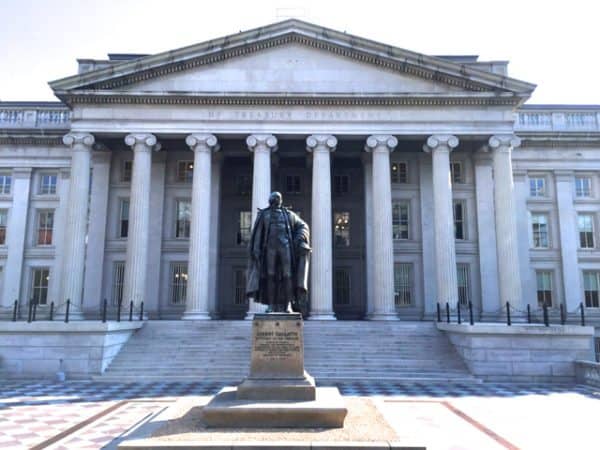As expected, the US Treasury Department has published a white paper addressing the emerging marketplace lending sector of finance. Entiteled “Opportunities and Challenges in Online Marketplace Lending”, the document follows a “Request for Information” from 2015 where approximatley 100 different platforms and industry observers submitted comments to Treasury.
Treasury officials described the document as a process to better understand the potential opportunities and risks presented by this evolving industry.
Recognizing the improvements in technology have led to non-bank lenders to provide access to finance in a faster and more efficient manner for both consumers and businesses, officials sought to take a balanced approach acknowledging the potential for online lending while emphasizing the industry remains young.
The white paper repesents staff input but Treasury also consulted with staff from other agencies including the Consumer Financial Protection Bureau (CFPB), Federal Deposit Insurance Corporation (FDIC), Board of Governors of the Federal Reserve System (FRB), Federal Trade Commission (FTC), Office of Comptroller of the Currency (OCC), Small Business Administration (SBA), and Securities and Exchange Commission (SEC).
Treasury stated that during their research, several common themes emerged, including the following:
- Use of Data and Modeling Techniques for Underwriting is an Innovation and a Risk: RFI commenters agreed the use of data for credit underwriting is a core element of online marketplace lending, and one of the sources of innovation that holds the most promise and risk. While data-driven algorithms may expedite credit assessments and reduce costs, they also carry the risk of disparate impact in credit outcomes and the potential for fair lending violations. Importantly, applicants do not have the opportunity to check and correct data potentially being used in underwriting decisions.
- There is Opportunity to Expand Access to Credit: RFI responses suggested that online marketplace lending is expanding access to credit in some segments by providing loans to certain borrowers who might not otherwise have received capital. Although the majority of consumer loans are being originated for debt consolidation purposes, small business loans are being originated to business owners for general working capital and expansion needs. Distribution partnerships between online marketplace lenders and traditional lenders may present an opportunity to leverage technology to expand access to credit further into underserved markets.
- New Credit Models and Operations Remain Untested: New business models and underwriting tools have been developed in a period of very low interest rates, declining unemployment, and strong overall credit conditions. However, this industry remains untested through a complete credit cycle. Higher charge off and delinquency rates for recent vintage consumer loans may augur increased concern if and when credit conditions deteriorate.
- Small Business Borrowers Will Likely Require Enhanced Safeguards: RFI commenters drew attention to uneven protections and regulations currently in place for small business borrowers. RFI commenters across the stakeholder spectrum argued small business borrowers should receive enhanced protections.
- Greater Transparency Can Benefit Borrowers and Investors: RFI responses strongly supported and agreed on the need for greater transparency for all market participants. Suggested areas for greater transparency include pricing terms for borrowers and standardized loan-level data for investors.
- Secondary Market for Loans is Undeveloped: Although loan originations are growing at high rates, the secondary market for whole loans originated by online marketplace lenders is limited. RFI commenters agreed that active growth of a securitization market will require transparency and significant repeat issuances.
- Regulatory Clarity Can Benefit the Market: RFI commenters had diverse views of the role government could play in the market. However, a large number argued that regulators could provide additional clarity around the roles and requirements for the various participants.
Treasuary made the following recommendations for both government stakeholders and industry participants;
- Support more robust small business borrower protections and effective oversight;
- Ensure sound borrower experience and back-end operations;
- Promote a transparent marketplace for borrowers and investors;
- Expand access to credit through partnerships that ensure safe and affordable credit;
- Support the expansion of safe and affordable credit through access to government-held data; and
- Facilitate interagency coordination through the creation of a standing working group for online marketplace lending.
The white paper also identified “potential trends” that required monitoring including credit scoring, liquidity risk, cybersecurity, AML risks and more. Treasury believes it is important to consider policies that could minimize borrower risks and increase investor confidence in a less favorable credit environment.
You may download the report here.


